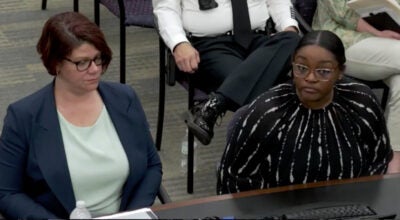NC education budget change worries some districts
Published 12:00 am Thursday, August 14, 2014
RALEIGH (AP) — The General Assembly removed a requirement in North Carolina law that said the recipe to build the two-year state budget begins with projected public school enrollment among its first ingredients. Some local districts are now worried they can no longer count on the money to teach a growing number of students.
For decades, projected enrollment growth in the schools statewide has been built automatically into the preliminary budget. Those early numbers are what the governor and lawmakers work from to determine how much to spend.
Enrollment levels are important because districts receive money in more than a dozen key areas calculated by formulas based on how many students they teach.
The state budget bill Gov. Pat McCrory signed into law last week ends the policy of having the increase going automatically into the initial budget figures. Now, presumably, enrollment growth and increased money associated with it will be added later in the annual budget process.
Republicans in charge of budget-writing say removing the projected enrollment from the initial documents will bring more clarity and make lawmakers examine spending closely. The legislature agreed last year to eliminate similar projected enrollment growth for the University of North Carolina and state community college systems.
All the changes take effect next year.
“I believe that the public will benefit from having a budget that is more transparent and it is frankly easier for them to understand what is growing in the budget and what is not growing in the budget,” said Rep. Nelson Dollar, R-Wake and senior co-chairman of the House Appropriations Committee.
Local district leaders, particularly those in the fastest growing regions, are worried they won’t have a good handle on how much money they’ll get from the state until weeks before school starts. Education officials have had confidence months before the school year started.
Now districts “will not be able to hire all the personnel (early) unless they upfront the money with local funds,” said Philip Price, the chief financial officer of the Department of Public Instruction.
Charlotte-Mecklenburg Schools Superintendent Heath Morrison last week called it a “very radical change” that will make planning harder.
Preliminary spending for the schools in the 2013-14 fiscal year had been projected to grow to nearly $8 billion with the enrollment projections incorporated into the preliminary budget, compared to $7.5 billion spent the year before. The final budget was just under $7.9 billion.
McCrory spokesman Josh Ellis said Wednesday the budgeting change is minor and the governor will still propose spending increases based on the enrollment growth. The data will then be forwarded to districts to help them plan ahead, Ellis said.
Republicans feel they’ve been unfairly stung by accusations they’ve been cutting public school spending when overall school spending keeps rising annually. Democrats say budget-writers now will be able to scale back spending more easily.
“This change does not guarantee that the extra 3,000-plus students who come into (the Wake County) system next year will be funded,’ said Senate Minority Leader Dan Blue, D-Wake. “And they’re going to come.”
Dollar says Republicans are committed to fully meeting the requirements of a growing student enrollment. The state Supreme Court has said all children have a constitutional right to the “opportunity to receive a sound basic education.”
This “in no way changes the fact that the state of North Carolina will continue as it always has — to fund those mandatory items,” Dollar said. But public education is losing some insulation by having to compete with other budgetary needs in the state, according to state schools Superintendent June Atkinson, a Democrat.
“It’s a move from fund certainty to uncertainty,” Atkinson said.
More News



